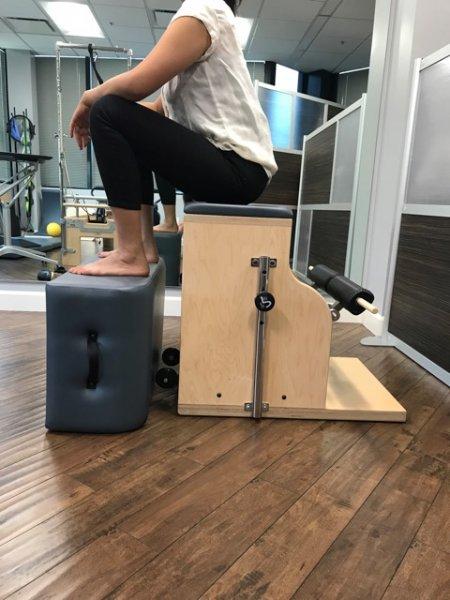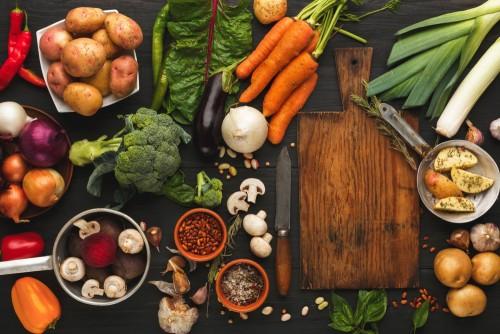Ways Prostatitis Related Pelvic Pain Can Be Reduced or Eliminated
Part 1 of 2 of our Prostatitis Lifestyle Management Series
An article published in the Journal of Prostate Cancer and Prostatic Disease outlines evidence-based recommendations to treat prostatitis related chronic pelvic pain syndrome (CPPS) in men (Gallo, L., 2014). These recommendations were well tolerated by clients and showed statistically significant reduction in symptoms caused by prostatitis and CPPS. Today we will cover dietary and toileting habits which can help relieve pelvic pain.
Prostatitis and Male Pelvic Pain
Chronic prostatitis, nonbacterial prostatitis, and chronic pelvic pain are all related conditions which negatively affect quality of life for the men who suffer from them. Symptoms vary, but are often described as a “headache in the pelvis” with pain symptoms affecting urinary and sexual function. The pain is real and their negative affects on quality of life are real as well. The pain caused by nonbacterial prostatitis can be disabling, preventing participation in valued activities and causing isolation and depression.
According to Harvard Medical School, prostatitis accounts for about 1.8 million visits to the doctor’s office in the United States each year. Between 9% to 16% of men of all ages experience prostatitis. About 90% of these instances cannot be tied to an active bacterial infection. Prostatitis affects men of all ages, unlike benign prostatic hyperplasia (BPH) and prostate cancer, which predominantly affect older men.
13 Evidence-Based Recommendations for Managing Prostatitis Related Pelvic Pain
Part One: 1-6
1) Avoid Alcohol
In six studies focusing on male pelvic pain (3 studies on prostatitis and 3 on interstitial cystitis concerning IC/BPS), regular alcohol intake was a habit found in those with high amounts of pain.
In the Collins study (2002), it was found that men who drunk more than two alcohol beverages per night had a major risk of history of prostatitis. Shorter et al. (2007), found that red and white wine, beer, champagne and other alcoholic beverages worsened the pelvic pain symptoms of female patients affected by IC/BPS.
2) Avoid Coffee
Drinking coffee increases risk of IC/BPS and pelvic pain according to Gallo and three studies that were reviewed in their study. Shorter et al. (2007) found that coffee (BOTH regular and decaf) worsened pelvic pain symptoms in 47-61% of patients. In 2010, Dr. Shoskes, an expert on chronic pelvic pain, commented that avoiding caffeine is a simple and effective action to treat and prevent this condition.
3) Avoid Spicy Foods
Shorter et al. (2007) found that the following foods worsened pelvic pain symptoms:
- Spicy food
- Chili
- Hot peppers
- Mexican food
- Thai food
- Indian food
- Horseradish
- Burritos
The hypothesis is that these foods irritate the mucosal tissues of the bladder tract, making voiding painful. Dr. Shoskes also suggests that avoiding spicy foods is one of the most simple and effective habits to treat and prevent pelvic pain.
4) Eat a Balanced Diet
Bartoletti et al. (2007) found that his population of patients affected by prostatitis ate more simple carbohydrates, milk, and cheese and ate fewer fruit and vegetables.
Gallo suggests that patients follow a diet that contains 50% carbohydrates (complex), 30% fats and 20% proteins each day.
5) Get Regular
As we talked about in this article about chronic constipation, constipation is a major contributing factor to function of the pelvic floor. Chronic constipation and/or diarrhea can trigger pelvic floor muscle spasms, creating more pelvic pain.
Bartoletti et al. (2007) found that 50% of patients with chronic pelvic pain complained of irregular rectal function, abdominal constipation and/or frequent episodes of diarrhea, bloating, indigestion, and slow digestion.
Eating enough dietary fiber and drinking at least 64 oz. of water a day will help keep you regular. I am also very adamant about correct toileting position!
6) Stop Straining in the Bathroom
Constantly straining to make a bowel movement or to empty your bladder in a hurry causes unneeded strain on the pelvic floor, exacerbating pelvic pain symptoms.
Don’t strain! Avoid straining, no pushing your pee out or holding your breath to force out a BM. Take your time and visualize the pelvic floor getting soft and heavy. Deep breathing, when done correctly, is much more efficient at emptying the bladder and bowel than straining and pushing.
Get into an ergonomic toileting position, this will help you go without straining.

The best position to sit on the toilet:
- Always sit on the toilet seat. No hovering!
- Feet firmly planted on a step stool
- Legs are separated to hip width’s distance or wider, elbows resting on thighs
- Lean forward with your knees higher than your hips
- Allow belly to get soft, floppy, and relaxed
- Stay relaxed on the toilet; relax your breathing and practice deep breathing exercise as outlined above.
- Allow yourself time. Don’t rush. Don’t strain.
In the next article, we will discuss lifestyle and sexual habits that you can change to help relieve pelvic pain. If you are in need of help urgently, please call your doctor and discuss whether pelvic floor therapy is right for you. The therapists at Fusion Wellness and Physical Therapy are well trained and ready to help. Give us a call today.
Resources:
*Bartoletti R, Cai T, Mondaini N, Dinelli N, Pinzi N, Pavone C et al. Italian Prostatitis Study Group. Prevalence, incidence estimation, risk factors and characterization of chronic prostatitis/chronic pelvic pain syndrome in urological hospital outpatients in Italy: results of a multicenter case-control observational study. J Urol 2007; 178: 2411–2415.
*Anderson RU, Wise D, Sawyer T, Chan C. (2005). Integration of Myofascial Trigger Point Release and Paradoxical Relaxation Training Treatment of Chronic Pelvic Pain in Men. Journal of Urology;174:155–60. PMID: 15947608.
*Chung, K. J., Han, A. N. Y., & Kim, K. H. (2015). Recommendations to the primary care practitioners and the patients for managing pelvic pain, especially in painful bladder syndrome for early and better prognosis. Journal of Exercise Rehabilitation, 11(5), 251–254. https://doi.org/10.12965/jer.150226
*Collins MM, Meigs JB, Barry MJ, Walker CE, Giovannucci E, Kawachi I. (2002). Prevalence and correlates of prostatitis in the health professionals follow-up study cohort. J Urol; 167: 1363–1366.
*FitzGerald MP, Anderson RU, Potts J, et al. (2009). Randomized Multicenter Feasibility Trial of Myofascial Physical Therapy for the Treatment of Urological Chronic Pelvic Pain Syndromes. Journal of Urology;182:570–80. PMID: 19535099.
*Gallo L. Effectiveness of diet, sexual habits and lifestyle modifications on treatment of chronic pelvic pain syndrome. Prostate Cancer Prostatic Dis. 2014;17(3):238-45.
Accessed at: https://www.ncbi.nlm.nih.gov/pubmed/24819236
*O’Leary, M. (2011). Treating prostatitis: Any cause for optimism?. Harvard Medical School Health Publications: Prostate Knowledge. Accessed at: https://www.harvardprostateknowledge.org/treating-prostatitis-any-cause-for-optimism
*Curtis, K., Weinrib, A., & Katz, J. (2012). Systematic Review of Yoga for Pregnant Women: Current Status and Future Directions. Evidence-Based Complementary and Alternative Medicine : eCAM, 2012, 715942. https://doi.org/10.1155/2012/715942
*Gupta, P., Gaines, N., Sirls, L. T., & Peters, K. M. (2015). A multidisciplinary approach to the evaluation and management of interstitial cystitis/bladder pain syndrome: an ideal model of care. Translational Andrology and Urology, 4(6), 611–619. https://doi.org/10.3978/j.issn.2223-4683.2015.10.10
*Huang, A. J., Jenny, H. E., Chesney, M. A., Schembri, M., & Subak, L. L. (2014). A Group-Based Yoga Therapy Intervention for Urinary Incontinence in Women: A Pilot Randomized Trial. Female Pelvic Medicine & Reconstructive Surgery, 20(3), 147–154. https://doi.org/10.1097/SPV.0000000000000072
*Schmalzl, L., Powers, C., & Henje Blom, E. (2015). Neurophysiological and neurocognitive mechanisms underlying the effects of yoga-based practices: towards a comprehensive theoretical framework. Frontiers in Human Neuroscience, 9, 235. https://doi.org/10.3389/fnhum.2015.00235
*Shorter B, Lesser M, Moldwin RM, Kushner L. (2007). Effect of comestibles on symptoms of interstitial cystitis. J Urol; 178: 145–152.

